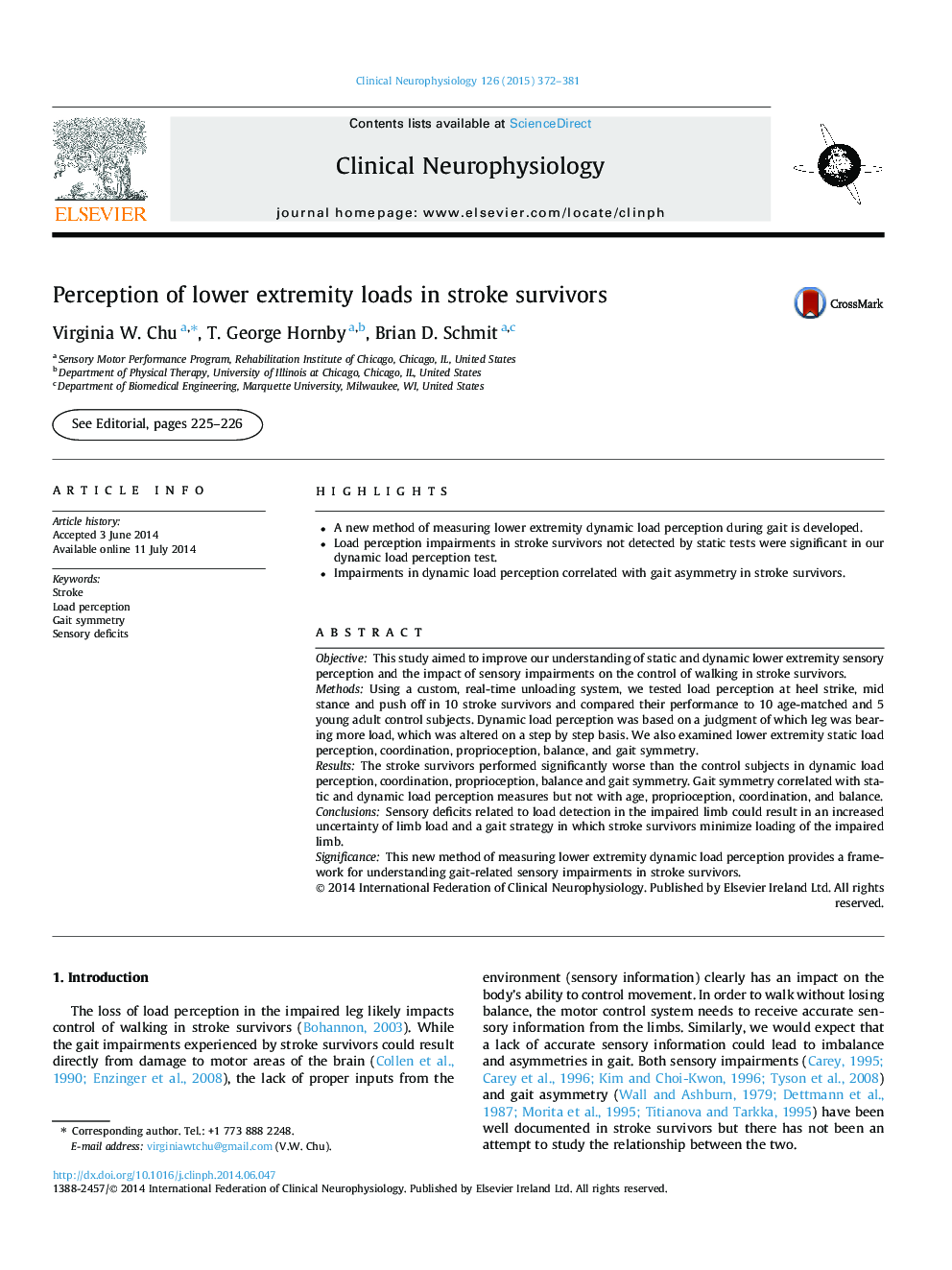| Article ID | Journal | Published Year | Pages | File Type |
|---|---|---|---|---|
| 3043081 | Clinical Neurophysiology | 2015 | 10 Pages |
•A new method of measuring lower extremity dynamic load perception during gait is developed.•Load perception impairments in stroke survivors not detected by static tests were significant in our dynamic load perception test.•Impairments in dynamic load perception correlated with gait asymmetry in stroke survivors.
ObjectiveThis study aimed to improve our understanding of static and dynamic lower extremity sensory perception and the impact of sensory impairments on the control of walking in stroke survivors.MethodsUsing a custom, real-time unloading system, we tested load perception at heel strike, mid stance and push off in 10 stroke survivors and compared their performance to 10 age-matched and 5 young adult control subjects. Dynamic load perception was based on a judgment of which leg was bearing more load, which was altered on a step by step basis. We also examined lower extremity static load perception, coordination, proprioception, balance, and gait symmetry.ResultsThe stroke survivors performed significantly worse than the control subjects in dynamic load perception, coordination, proprioception, balance and gait symmetry. Gait symmetry correlated with static and dynamic load perception measures but not with age, proprioception, coordination, and balance.ConclusionsSensory deficits related to load detection in the impaired limb could result in an increased uncertainty of limb load and a gait strategy in which stroke survivors minimize loading of the impaired limb.SignificanceThis new method of measuring lower extremity dynamic load perception provides a framework for understanding gait-related sensory impairments in stroke survivors.
